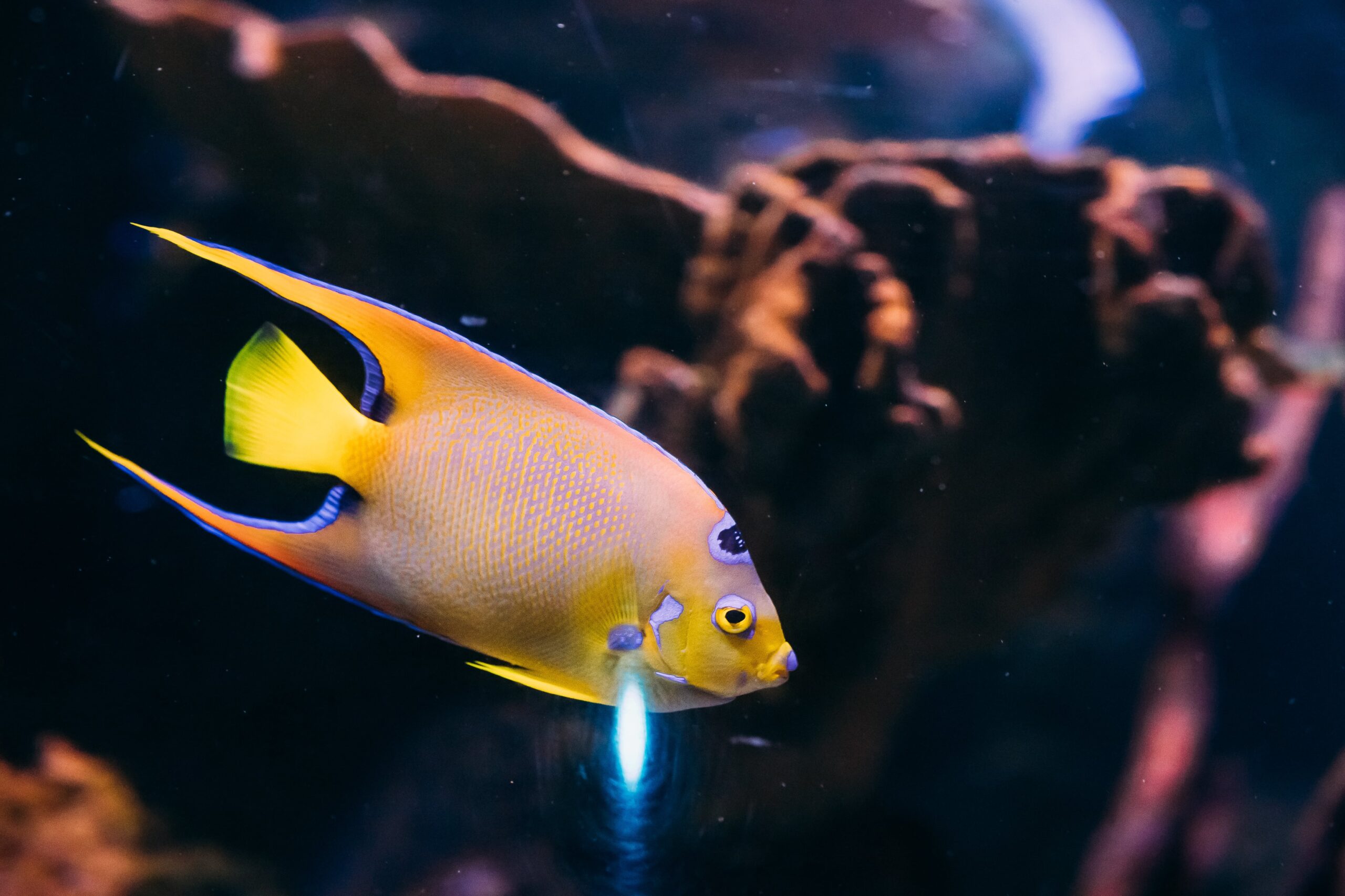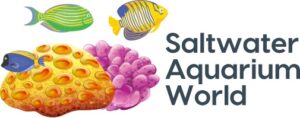
French Angelfish Care Guide
Glossary:
- Care Guide & Requirements
- Reef Safe
- Prices
- Food & Diet
- Facts
- FAQs
- Tank Mates & Environment
The French Angelfish, or Pomacanthus paru, is a popular species of angelfish among aquarists for both its appearance and curious nature. Curiously enough, it also changes colors with age, starting black with a series of vertical yellow stripes that eventually fade.
The following French Angelfish care guide will show how to properly care for these fish and decide whether they’re the right fish for you.
Is the French Angelfish reef safe?
The French Angelfish might be a good pet for aquarists, but not in a reef tank. Wild French Angelfish might be present around reefs, but they tend to nip at coral and various invertebrates in a reef tank environment.
You’ll want to avoid placing French Angelfish in a tank with corals, clams, starfish, oysters, and other invertebrates. Instead, it’s best to keep this angelfish in a tank with other fish.
French Angelfish food and diet
Like other species of angelfish, the French Angelfish is an omnivore, which means you’ll need to feed this fish vegetation along with meat. Some potential food to give your French Angelfish includes marine algae and invertebrates, along with sessile organisms such as bryozoans and sponges.
You can feed these fish up to three times per day to keep them healthy and well-fed. This feeding schedule will also help prevent the fish from seeking food from the tank’s other inhabitants.
French Angelfish FAQs
What is the French Angelfish lifespan?
The French Angelfish has plenty of longevity, with a potential lifespan of 10 to 15 years. This makes the French Angelfish an excellent pet to have if you plan on keeping it around for a decade or longer. The key is to know how to maintain the tank’s conditions and provide the right care for your French Angelfish.
What are the tank requirements for the French Angelfish?
As one of the largest species of angelfish, the French Angelfish needs plenty of space to swim and explore, as they reach sizes of up to 24 inches long. However, they don’t tend to go beyond 16 inches in captivity. Because of their size, use a tank that’s at least 250 gallons for a single fish. You should also include plenty of live rock and set up a cavelike environment for the fish to swim around and hide.
Regarding the water conditions, they tend to do well in traditional settings. These include a temperature of 72 to 80 degrees Fahrenheit, a specific gravity of 1.020 to 1.025, and a pH of 8.1 8.4.
Why is it called a French Angelfish?
Interestingly, there’s very little information about why this Angelfish has this name. However, the original scientific name comes from Marcus Elieser Bloch, a German naturalist and physicist, who gave it the name Chaetodon paru, which has a Jamaican and Brazilian type locality. paru is the Portuguese designation. Its current scientific name, Pomacanthus paru, is derived from the Greek words for cover and spine, “poma” and “akantha,” respectively.
French Angelfish price
French Angelfish tend to be on the more expensive end of the Angelfish spectrum, meaning that the price of a French Angelfish will normally cost you around a couple hundred at least. However, there’s a fairly wide range of fish types and sizes you can buy, with prices going anywhere from $100 to $1,000 or so. You can shop around to find the right French Angelfish for you.
French Angelfish facts
Here are a few facts about French Angelfish that you might not know about:
- Juvenile French Angelfish tend to act as cleaner fish that help eliminate ectoparasites from the scales of other fish.
- French Angelfish are monogamous and form long-term breeding pairs that are extremely protective of their chosen territory.
- Their disc-shaped body makes it hard to spot them when face-to-face with them, but they’re highly visible from the side.
What other fish are the best tank mates for the French Angelfish?
French Angelfish are semi-aggressive, which is why you should carefully select this fish’s tank mates. Other fish are best to keep with this species, but they need to be equally or even more aggressive.
Some viable tank mates for this species include Wrasses, Surgeonfish, Butterflyfish, Rabbitfish, Blennies, and Triggerfish. Basically, any fish that your French Angelfish won’t perceive as potential food can make it in a tank with this species. As such, don’t put slow-moving and peaceful fish, or any that the angelfish might mistake for invertebrates.
Where to buy French Angelfish
You can buy French Angelfish from plenty of online stores, such as:
If you’re looking for a great fish to add to your saltwater aquarium, the French Angelfish remains one of the best. However, you must be sure to feed it regularly and avoid placing it in a reef tank. Otherwise, they’re relatively easy to care for and pretty to look at.
